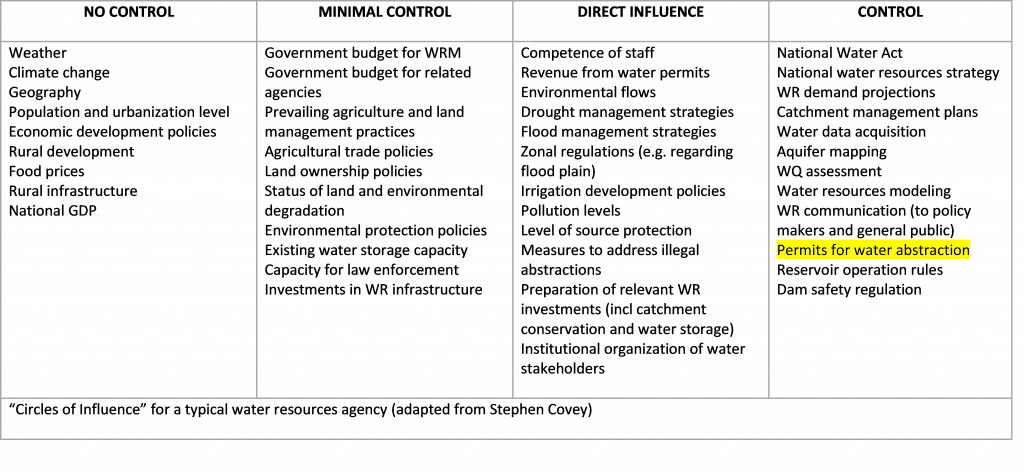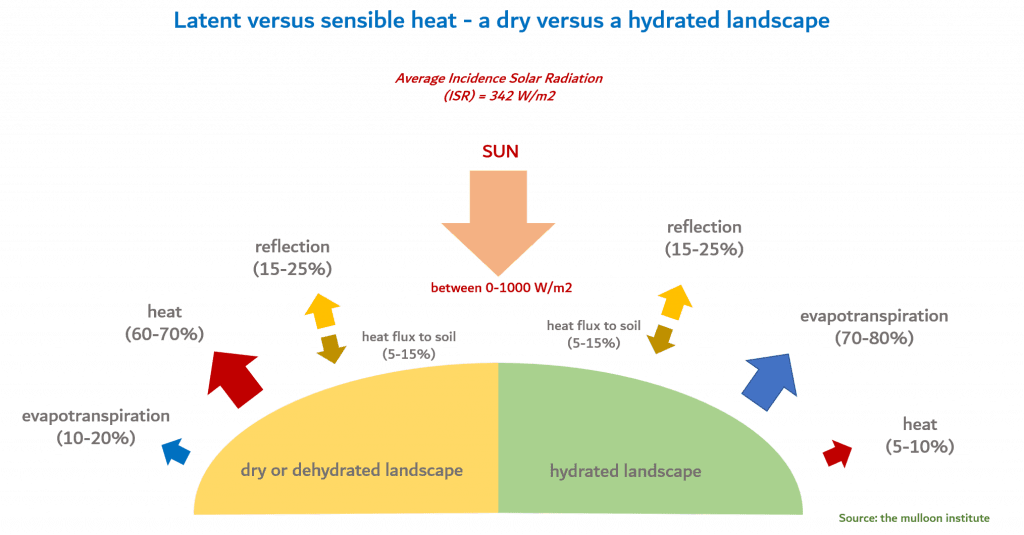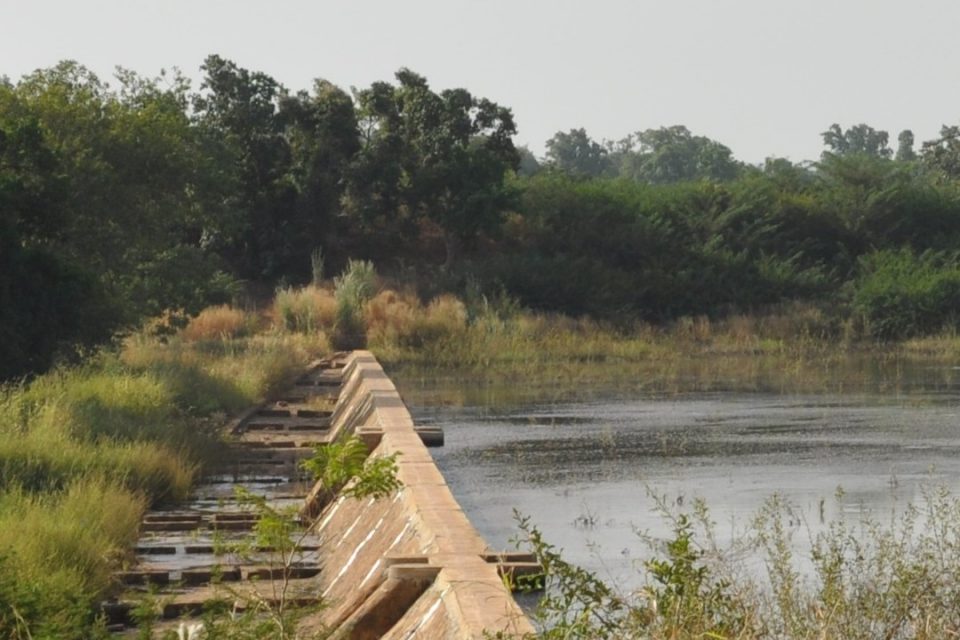Someone recently suggested to have a good look at Stephen Covey’s circles of influence. I sat down and prepared an influence table for a typical water resources agency. Even this tentative table—prepared on my own in an hour or so—proved surprisingly insightful.
Water management is closely linked to land management—and by extension to agricultural practices and environmental protection. But water managers have little influence over these factors. This greatly complicates their job.

Looking at the table, it seems that issuing permits is probably a water agency’s most effective tool. Almost all other elements they control are concerned with generating information or preparing policies & plans. These are useful and necessary—but not for day-to-day water management.
Permits are used to manage abstractions. By regulating water use, they aim to optimize the societal benefits of scarce water resources, protect important environmental value, and ensure that conflicting water uses are avoided or managed. In addition, annual fees for authorized water abstractions provide an important income stream for water agencies.
But maybe we should extend the function of water permits, and link them—when applicable—to proper land management. Possible conditions include measures to capture rainfall, slow-down runoff, encourage infiltration of rainwater to soil moisture or groundwater, promote soil conservation, restore vegetation cover, or create micro-scale reservoirs. The appropriate conditions will differ per landholding and climate; measures will be diverse and of different scales. In the tropics, all should encourage catchment rehydration.

Many of these measures are simple, small-scale, and low-cost. They increase climate resilience, soil fertility, and land productivity. Hence, they will over time promote land appreciation—and thus directly benefit landowners. Enforcing compliance for large landholdings or commercial farms should be feasible. Public benefits of proper land stewardship are multiple and include flood control in downstream areas, higher baseflow, lower sediment yields, a potentially wetter and cooler local micro-climate (depending on the scale), carbon sequestration, and others.
Responsible land stewardship and sustainable water resources management are interlinked. Permits—the water agency’s prime tool—could encourage both.
Mike Thomas of Rural Focus brought my attention to policies in the USA during the Great Dust Bowl (the 1930’s) that encouraged farmers to develop soil & water conservation plans together with the local government agricultural office. The US Federal Government passed a law that made farm bank loans contingent on having and complying with such a plan. It shows that the importance of responsible land stewardship has been clear for a long time, and that governments have been experimenting with strategies to encourage farmers to implement proper land management. In this particular case—the USA in the 1930’s—the setup apparently worked very well in changing land management practices.
